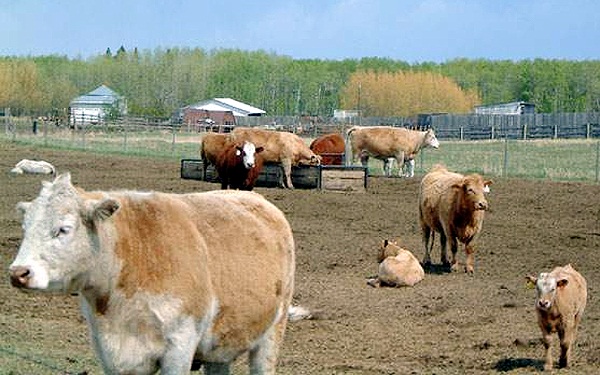Schmallenberg virus was first reported in in cattle the
summer of 2011 near the town in Northern Germany that gives it its name. Since
then, the spread of the virus has been rapid. In the UK, it was first reported
on 11 farms in January 2012, and has grown month-on-month since then. It is
spread by midges (Culicoides), and so
can easily be transferred between animals. It has also been found in wild deer,
which could be a reservoir of infection.
It causes stillbirths in lambs and calves, and fever,
reduced milk yields and loss of appetite in adult cattle. Schmallenberg virus
has now been confirmed at over 1500 farms in the UK, and has been detected
throughout northern, central and eastern Europe.
Cases of Schmallenberg have now been reported in all parts
of England, Wales and Northern Ireland. This has put Scottish farmers on high
alert for the disease, which is carried by midges, and could thus cause havoc
in the Scottish Highlands.
Joanne Pugh, of the National Sheep Association, spoke to
BBC news and was keen to stress that "as an overall picture across the whole
sheep flock it’s a low impact disease”, however she also did point out that for
the affected flocks the disease is devastating.
The key to tackling this disease will be to gather more
data on the virus and its epidemiology – and this is precisely what several
animal health groups are attempting to do.
However, there is already information available. As veterinary
expert at CABI Robert Taylor points out, “With a new disease like SBV much can
be learned about potential risks, epidemiology, and control strategies from our
knowledge of its relative, Akabane virus, and from the behaviour of the midge
that transmits the virus.”
Taylor highlighted that
the
CAB Abstracts Database already has 156 records on Schmallenberg virus, and
550 on the closely related Akabane virus. The database also has a vast amount
(4450 records) on the Culicoides
vector.
This information could be key in predicting the impact of
the virus, understanding its workings, and developing strategies to manage and control
it.
Whilst Schmallenberg virus will continue to affect herds
and flocks for some time yet, work to develop a vaccine is well underway. Understanding
the cost-benefit analysis of control strategies for a new disease is a
challenge. Using a combination of research and data collection, and an
examination of the information already available, the virus may yet be controlled.

